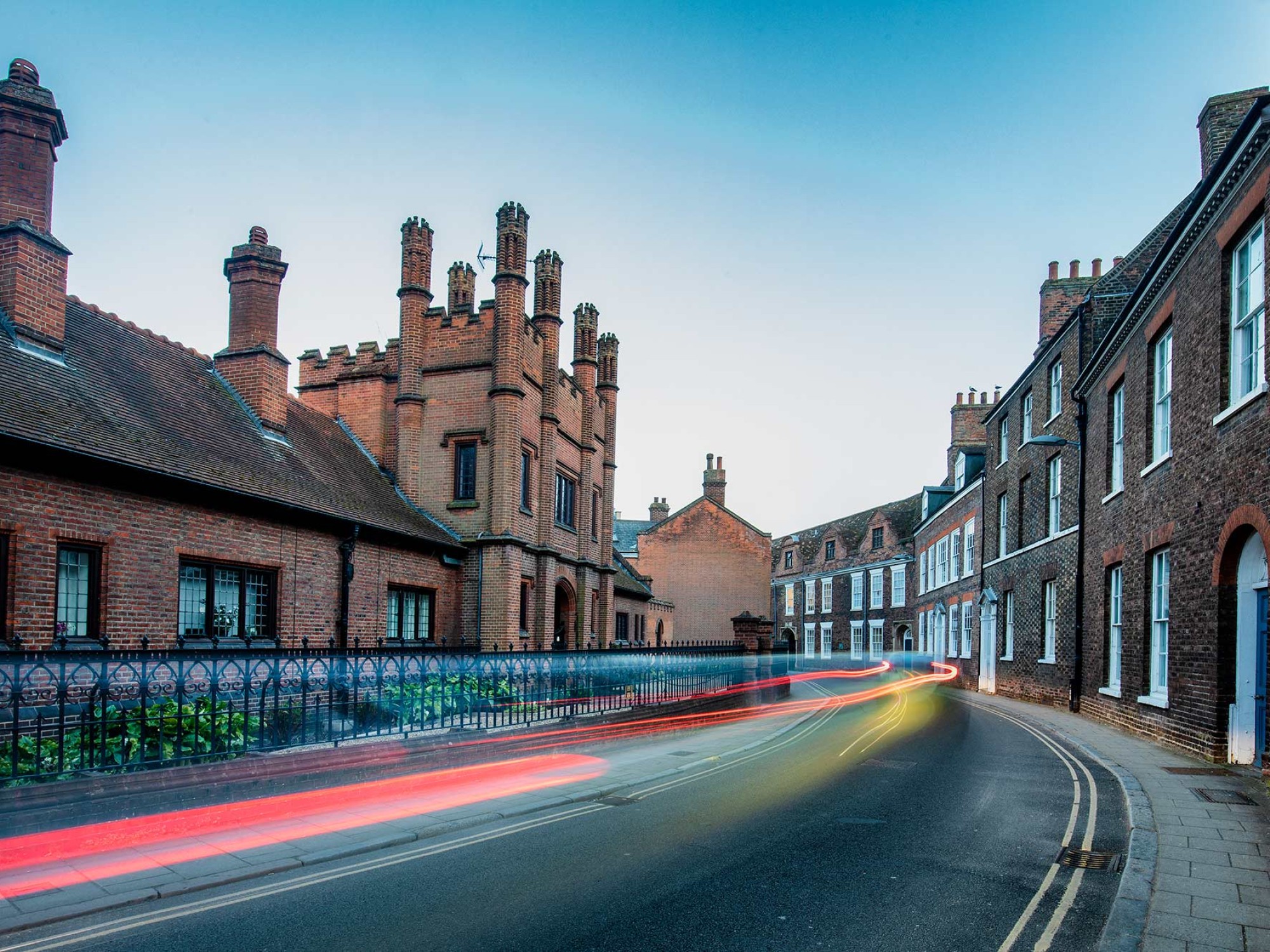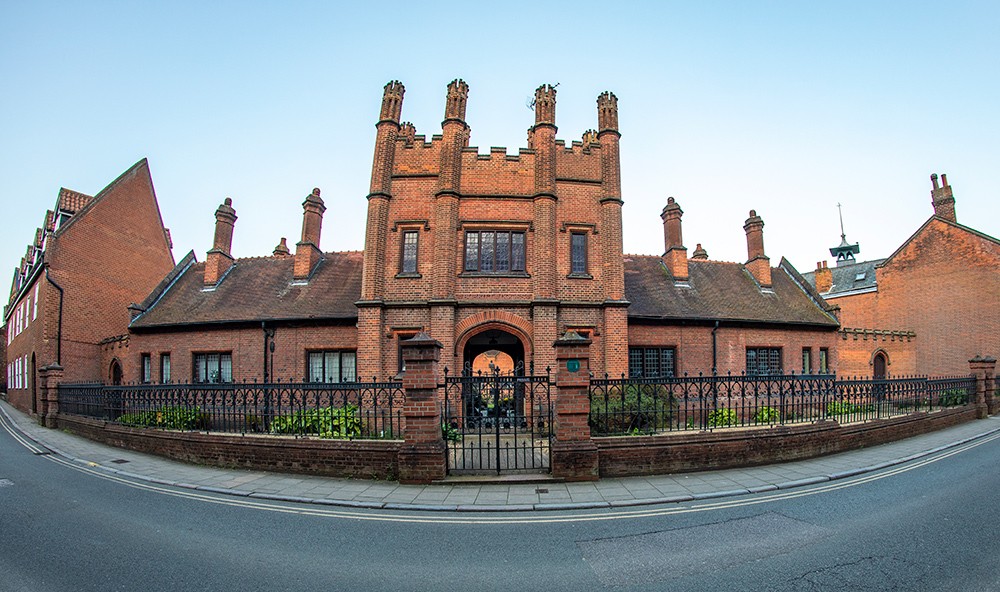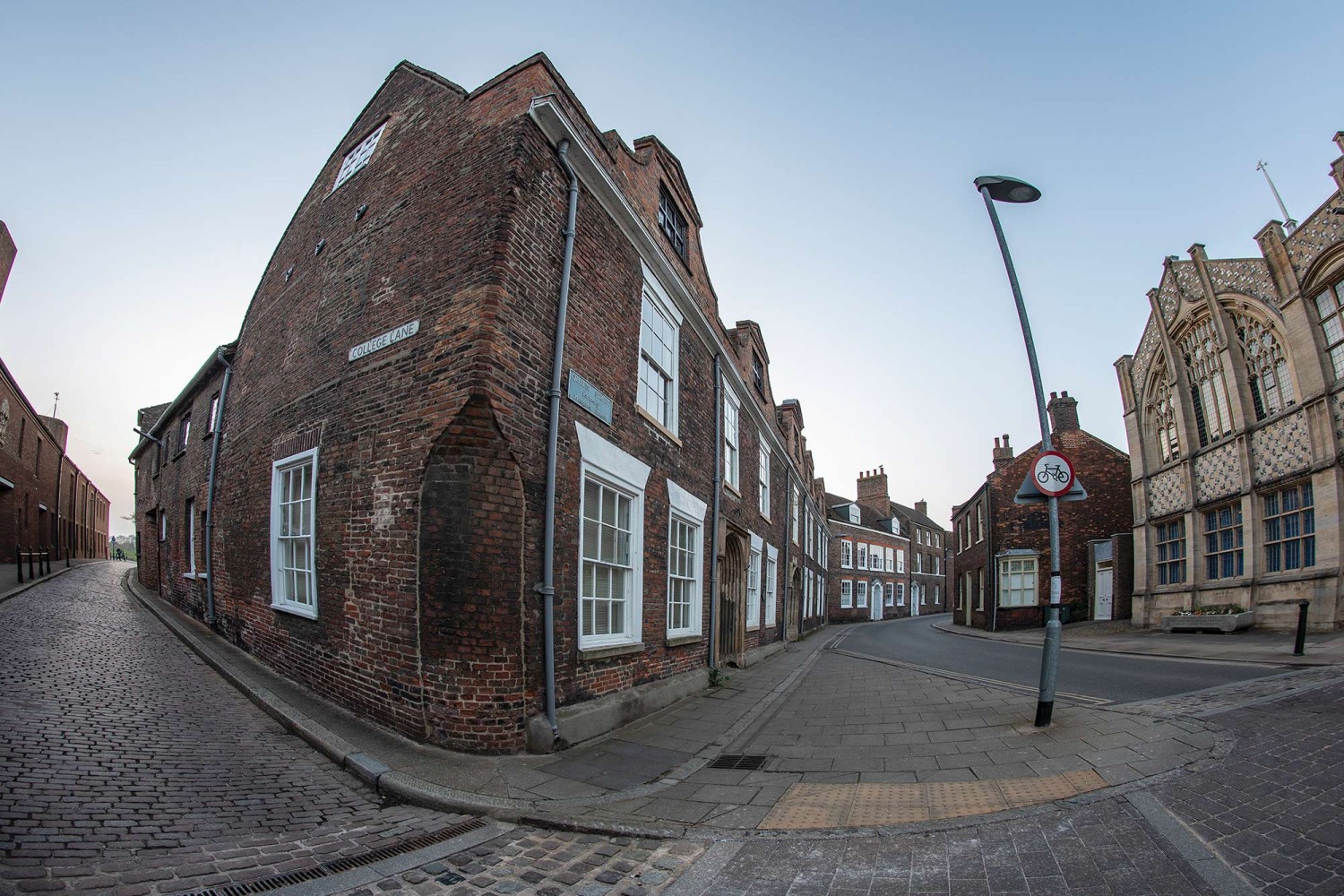
A stunning street with extraordinary tales to tell
With its wealth of magnificent historic buildings, Queen Street in King’s Lynn is a truly captivating location. Let’s take a look at some of the incredible treasures found in this special part of town
Starting at the end of King Street and running down to Saturday Market Place, Queen Street is one of the most intriguing places in King’s Lynn. Though it may not be very long, it’s an area packed with heaps of history, amazing architecture, and astounding sites of local and national importance.
There are few buildings in Norfolk as unique and exquisite as the grand Grade I listed Clifton House, which is thought to be the finest surviving merchant house in King’s Lynn. Constructed in a prime position (its front facing Queen Street and its back to the river) the stunning mansion retains an amazing series of extravagant historic interiors, with something from almost every century. Occupying the site of two or three medieval properties, the present house was built mainly in the 15th century – though it contains many remarkable original features.
A vaulted undercroft beneath the building is thought to be the earliest brick structure in Norfolk, and England’s largest domestic medieval tiled pavement was discovered in the kitchen in 1960s. The site’s most outstanding feature is undoubtedly its five storey Elizabethan tower, which was likely designed as a lookout tower and a lavish status symbol for Lynn merchant George Walden (who owned the property in the 1570s.)
It was the final remodelling of Clifton House, which took place under the powerful Taylor family at the turn of the 18th century, that gave the building its sheer magnificence and grandeur. Believed to have been undertaken by the famous architect Henry Bell (best known for his iconic Custom House) the scheme included installing early sash windows, constructing an impressive new staircase, and creating a grand doorcase with twisted mahogany ‘barley sugar’ columns – which many stop to admire when passing down Queen Street.
Further along the road you’ll find Burkitt Homes, another fine historic gem. With its stunning two storey gatehouse and elegant embattled turrets, the grand Grade II listed building is thought to be the most striking almshouse development in King’s Lynn. Consisting of 12 self-contained homes, the property was built and endowed in 1909 by William Burkitt of Derbyshire in memory of his uncle, William Burkitt of Lynn. William senior, who lived on Queen Street just opposite the site of the homes, played an incredibly important role in the town’s history and development.
As one of the largest corn merchants in England, he carried out a great deal of business in the area and served as town councillor, churchwarden at St Margaret’s, and mayor of Lynn in 1883 & 1886.
The unique group of almshouses are not only a distinctive tribute to this remarkable man, they’re also an astounding addition to the town’s architectural features, and a wonderful place for people who have lived industrious lives in the borough to spend their declining years.
One of King’s Lynn’s most complete medieval survivals is the marvellous Grade I listed Thoresby College, which lies at the junction between Queen Street and Saturday Market Place. Founded by Thomas Thoresby, a wealthy merchant and former mayor of Lynn, it was intended to provide accommodation for 13 chantry priests employed at the town’s powerful Trinity Guild. Built between 1508 and 1511, the college was still in progress when Thoresby died in 1510 - though he left a substantial sum in his will for its completion. In 1547, due to the Reformation, the guilds were abolished and Thoresby College ceased to have a religious function.

Over the years the building was adapted for a variety of uses including a warehouse, a merchant’s house, and a private school – though it gradually fell into disrepair. Fortunately, in 1963, the entire complex was saved by two anonymous benefactors (later revealed as Ruth, Lady Fermoy, and her daughter Mrs Shand Kydd – mother of Princess Diana.) They generously presented the building to King’s Lynn Preservation Trust for restoration, requesting that it should be used to benefit the whole community – and their wish was dutifully granted.
Today Thoresby College is divided into domestic flats and offices - including our new KL magazine office. Its grand Great Hall and Lower Hall (available for private hire) have become popular venues for local organisations, and its charming courtyard is always open to visitors.
Fully restored to its former glory, the building is more than just a piece of the past - it’s playing an important role in the present. Entering from Queen Street you’ll pass through the original panelled oak door which, with its finely carved Latin inscription, pays tribute to ‘Thomas Thoresby founder of this place.’
A scenic walk along Queen Street is like taking a journey through the past – it’s a truly remarkable part of King’s Lynn’s rich history.

